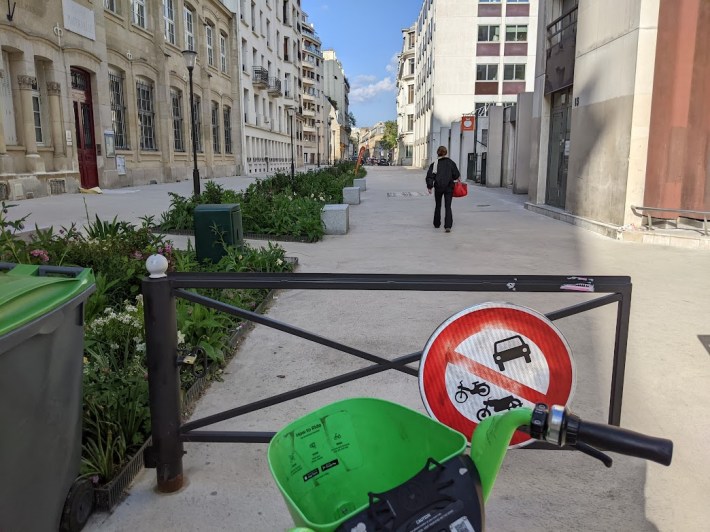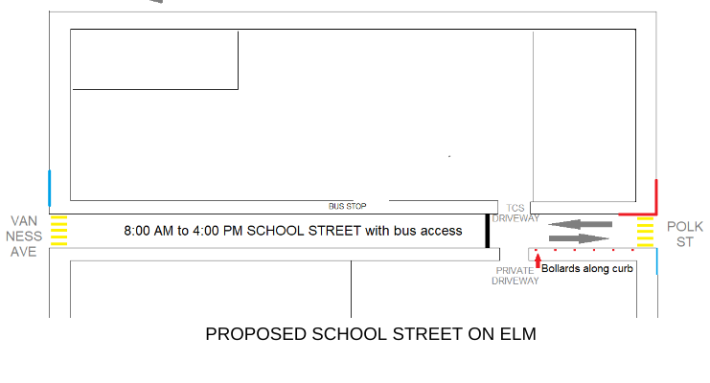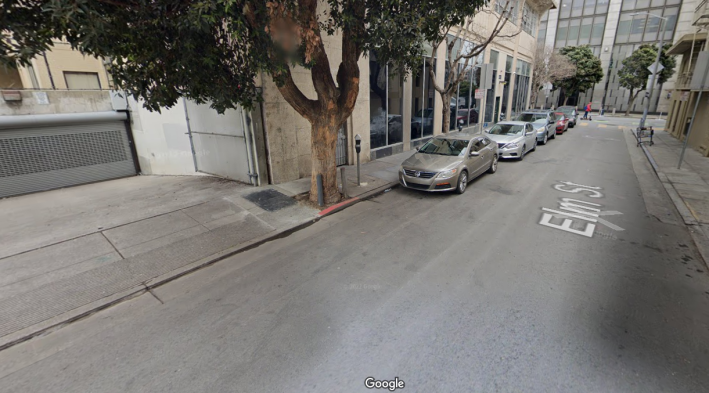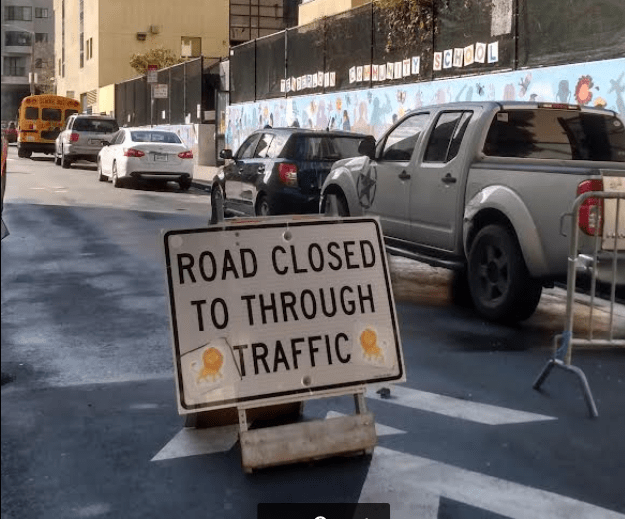Note: GJEL Accident Attorneys regularly sponsors coverage on Streetsblog San Francisco and Streetsblog California. Unless noted in the story, GJEL Accident Attorneys is not consulted for the content or editorial direction of the sponsored content.
Tenderloin advocate Scott Bravmann has tried since before the pandemic to create some outdoor space for kids on Elm Alley behind the Tenderloin Community School. His idea: close part of the short street segment to traffic and use the space for a playground, the way they've done in Paris (see image below). "We intend to create a genuine school street, a thirty-year-old model that is widespread in Western Europe," he told Streetsblog.

Unfortunately, bureaucratic hurdles and the intransigence of the SFMTA continue to foil the project. And nobody can claim it's about lack of funds or political backing.
Mayor London Breed approved $4 million for community-driven projects in the Tenderloin in 2022 under the banner of the "Tenderloin Community Action Plan." Part of that plan includes the Elm Alley proposal. According to the Planning Commission, Elm would become:
...a new pedestrian-oriented space with a swing gate for temporary street closure, street murals, and movable games for preschool and elementary students to enjoy during school hours, and for families with children to enjoy weeknights and weekends.
But going by communications forwarded to Streetsblog by Bravmann, SFMTA is standing in the way of the project because the street "isn't wide enough" and the gates would block access to two driveways located across from each other near the Polk Street side of the alley. At first glance it's hard to see why that's the case, since - as illustrated in the diagram below - the gates (indicated by a thick vertical black line) would be located on the far side of the driveways:

Furthermore, the street was closed during the pandemic to give kids more space, without issues. In fact, Bravmann continues to put out the "no through traffic" sandwich board sign seen in the lead image during school hours. His hope was always that the closure would evolve into a true school street enclosed with heavy, swinging metal gates that can stop drivers from cutting through or parking there.
"We want to close the block, but leave the school's driveway accessible," he told Streetsblog. Instead, he said nothing is happening "except for garbage getting dumped here" and illegal parking.
Bravmann forwarded an email to Streetsblog from Jarrett Hornbostel, an engineer with SFMTA's Street Use, Development, and Signals department, who wrote "...we are unable to approve a closure that begins partway down the block. Elm Street is not wide enough to allow a vehicle to turn around in the middle of the block nor is it wide enough to properly accommodate two-way traffic."
Note the photo of the location below. It's easy to see that Hornbostel's assertion about the street not having room for two-way traffic doesn't make sense:

Streetsblog measured it and found that the width of the street is over 21 feet, more than enough room for drivers to get past each other. Furthermore, any driver should be able to turn around easily by reversing into one of the driveway aprons.
Streetsblog reached out to SFMTA for clarification and will update this post when a reply is received.
However, it's clear that Hornbostel's response can really only mean one thing: he's starting from the assumption that removing street parking is a non-starter.
In his email, Hornbostel also references a supposed need for fire department review, sidestepping the fact that SFMTA regulates street uses, not the SFFD. Clearly, fire safety is not the issue: Bravmann reports that the city continually fails to tow illegally parked cars from the alley, which physically impedes fire access. A school streets gate, on the other hand, can be swung open to allow rescue trucks to enter if needed.
“Kids at the Tenderloin Community School deserve safe, green spaces to enjoy just as much as kids anywhere else in the city. Volunteers and school staff have worked hard to make Elm Street an inviting place for students, but they need the City’s help with closing the street to traffic during the school day to fully activate the street for safe recreation," wrote Supervisor Dean Preston in an email to Streetsblog. "My office is in touch with the SFMTA, Planning, and the Tenderloin Community School and we hope to move through this impasse and activate this community-supported project.”
Bravmann, meanwhile, is fed up with the city prioritizing five or six parking spaces over the needs of the Tenderloin's 3,500 children.
"No one at SFMTA or SFFD has yet gone on record explaining to me why children in the Tenderloin should not be permitted to have a safe, healthy and inviting space adjacent to their public elementary school instead of a dirty, unhealthy and dangerous block that no city department will take responsibility for," wrote Bravmann in an email to SFMTA. "The recalcitrance denies the Tenderloin the right to the same beneficial changes to street use that the city grants to other neighborhoods."





